Manteghi Nezhad Historical Mansion in Shiraz, Iran
The Manteghi Nezhad Historical Mansion is one of the most notable architectural landmarks in Shiraz, offering a rich representation of Persian domestic architecture.
Located in the heart of the city, this mansion stands as a reminder of Shiraz’s past, blending artistry with functionality. Its carefully preserved structure reflects the craftsmanship of the Qajar era, with detailed decorations and traditional design elements that were once typical in homes of affluent families.
Situated close to many other cultural attractions, the mansion provides visitors with insight into the everyday lives of noble families and how architecture served both practical and aesthetic purposes. Its intricate design, from the use of delicate plasterwork to wooden carvings, showcases the attention to detail that was prominent in Persian architecture.
Historical Background of Manteghi Nezhad Mansion

The origins of the Manteghi Nezhad house date back to the late Qajar period, during a time when Shiraz was flourishing as a center of Persian culture. Built by the prominent Manteghi Nezhad family, the mansion served as a symbol of their status and wealth. The family was influential in Shiraz, known for their contributions to trade and local governance during the Qajar and early Pahlavi periods.
Throughout its history, the mansion has witnessed the political and social changes that have shaped Shiraz. It stands as a representation of the traditional Persian way of life, where architecture was not only functional but also a reflection of the family's standing. The Manteghi Nezhad family’s influence during this period is evident in the size, design, and preservation of the mansion, making it an important part of Shiraz's historical and cultural development.
Manteghi Nezhad Historical House Architecture
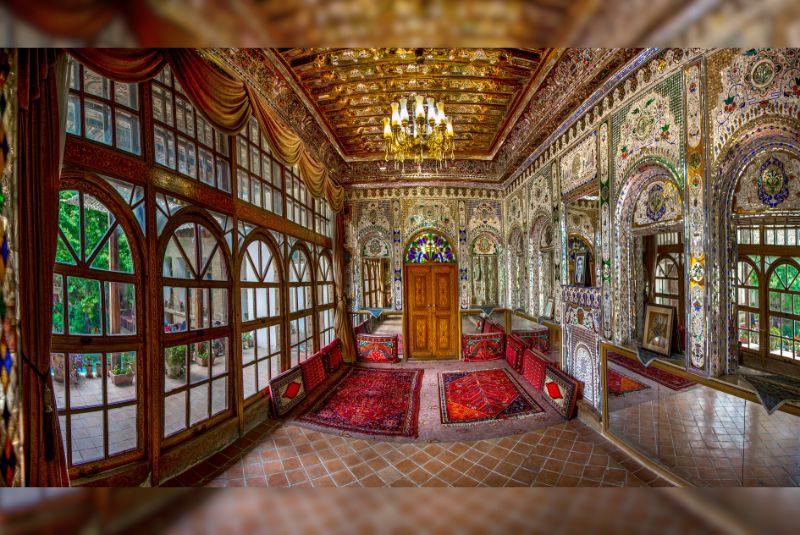
The Manteghi Nezhad Historical Mansion is a fine example of Qajar-era architecture, reflecting the traditional Persian aesthetic that was prevalent during this period. The structure is made primarily from brick, wood, and plaster, materials commonly used in Persian homes of that time. The mansion’s layout is organized around a central courtyard, which served as both a gathering space and a means of ventilation, providing a cooling effect during the hot seasons.
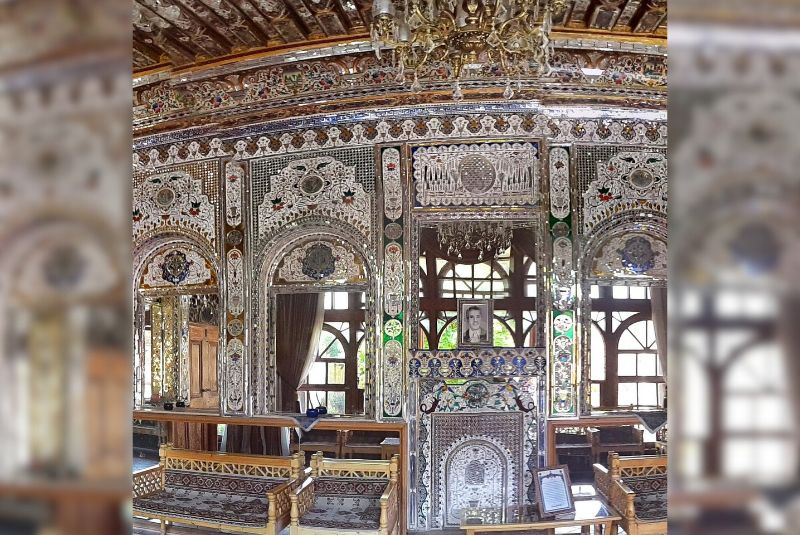
One of the most striking features of the mansion is its intricate plasterwork, which decorates many of the walls and ceilings. Delicate carvings and floral motifs are prominent, showcasing the craftsmanship that was highly valued in Persian architecture. The stained glass windows (or owrsi) are another key feature, casting vibrant colors into the rooms and adding a decorative element to the house’s facade. The mansion also includes beautifully carved wooden doors and windows, adding to its charm and reflecting the skill of the artisans.
The architectural design of the Manteghi Nezhad Mansion mirrors the traditional Persian way of life, with a clear division between private and public spaces. The layout ensures that each area of the house has a specific function, reflecting the cultural importance of hospitality while maintaining privacy for the family.
Interior Design and Decor
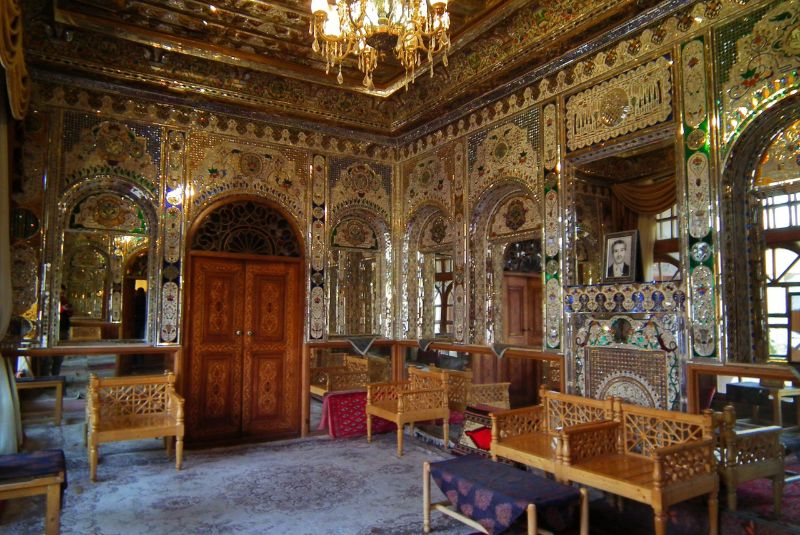
Inside the Manteghi Nezhad house, the attention to detail continues with stunning decorative ceilings that are adorned with intricate patterns and geometric designs. The ceilings in the main hall and reception areas often feature complex plasterwork or paintings, enhancing the elegance of these spaces. Murals and tile work also play a prominent role in the interior design, adding both color and texture to the walls.
The mansion’s main hall is typically the most ornate space, used for receiving guests and formal gatherings. It often features high ceilings and is surrounded by windows that allow natural light to filter in. Reception areas are similarly well-decorated, showcasing the family’s wealth and social standing. In contrast, the private spaces, including bedrooms and family areas, are simpler but still exhibit fine craftsmanship through wooden paneling and smaller decorative touches.
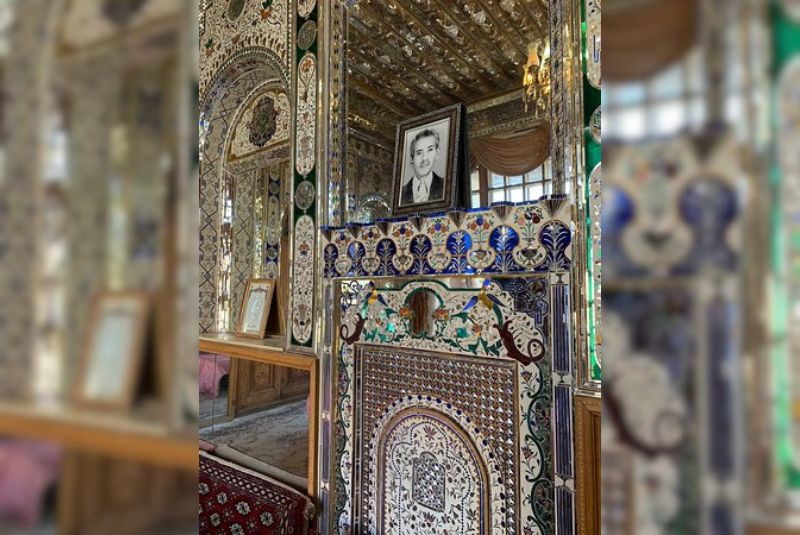
Each room within the mansion is designed with both function and aesthetic in mind, making the Manteghi Nezhad Historical Mansion a reflection of Persian cultural values and a showcase of the architectural traditions of its time.
Garden and Outdoor Spaces

The Manteghi Nezhad Historical Mansion is complemented by a carefully designed garden, a vital element of traditional Persian homes. The garden, if applicable, typically includes a variety of plants and trees that provide shade and a tranquil atmosphere. Central to the garden’s design is the use of symmetrical layouts, a hallmark of Persian garden aesthetics, where the space is divided into sections with pathways connecting various parts of the area.

Water features, such as small fountains or shallow pools, are often placed at the center of the garden, enhancing the ambiance by creating a serene and refreshing environment. The sound of flowing water, combined with the greenery, adds to the peaceful atmosphere of the mansion, making it an ideal space for relaxation and gatherings.
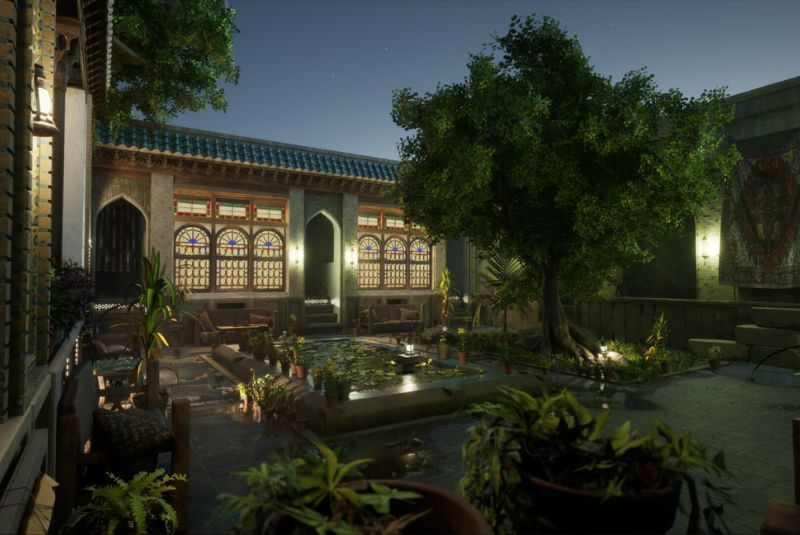
These elements not only serve as a functional aspect of the garden but also reflect the Persian emphasis on the balance between architecture and nature.
Cultural Significance of Manteghi Nezhad Mansion

The Manteghi Nezhad Historical Mansion holds a special place in Shiraz due to its architectural beauty and the cultural insights it provides. It stands as a well-preserved example of traditional Persian craftsmanship, with its intricate plasterwork, stained glass windows, and elegant wooden carvings reflecting the skills of artisans from the Qajar period. As one of the historical houses that still survives in modern Shiraz, the mansion offers a unique glimpse into the past, showcasing how affluent families once lived.
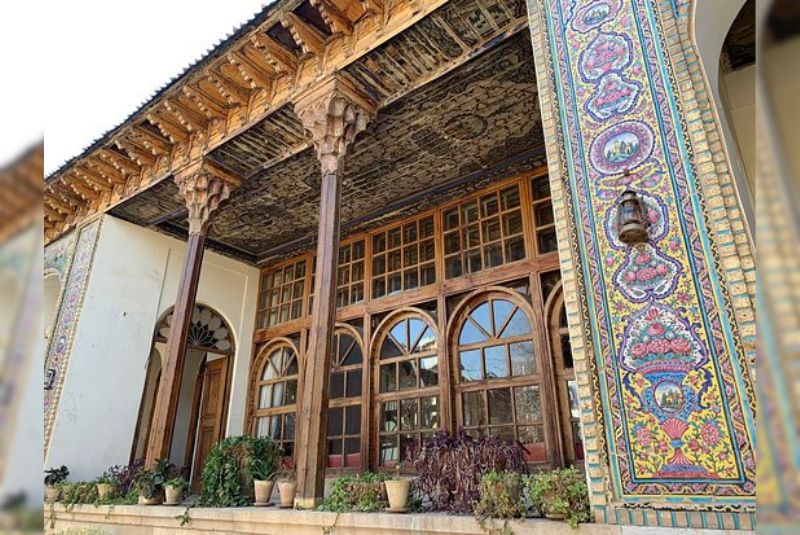
This mansion also plays an important role in preserving Persian architectural and cultural traditions, making it an educational site for both locals and tourists. It represents the fusion of art and everyday life in a way that remains relevant to understanding Shiraz’s development as a cultural hub. While there may not be any specific notable events directly linked to the house, its role in maintaining and celebrating Persian art and architecture is undeniable.
Manteghi Nezhad Mansion Location and Access
The Manteghi Nezhad Historical Mansion is located in the city of Shiraz, Iran. Visitors can easily reach it by public transport or on foot if they are staying in the nearby city center. Local buses and taxis regularly service the area, and the mansion is conveniently situated for those exploring the historical parts of Shiraz. Its exact location can be found on most local maps or by asking for directions from locals familiar with the area.
Admission
Visitors should check for updated information on ticket prices and opening hours before planning their visit. The mansion may have a small entrance fee, typical for historical sites in Shiraz, and its hours of operation can vary depending on the season. It’s advisable to visit in the morning to avoid crowds and ensure a more relaxed experience.
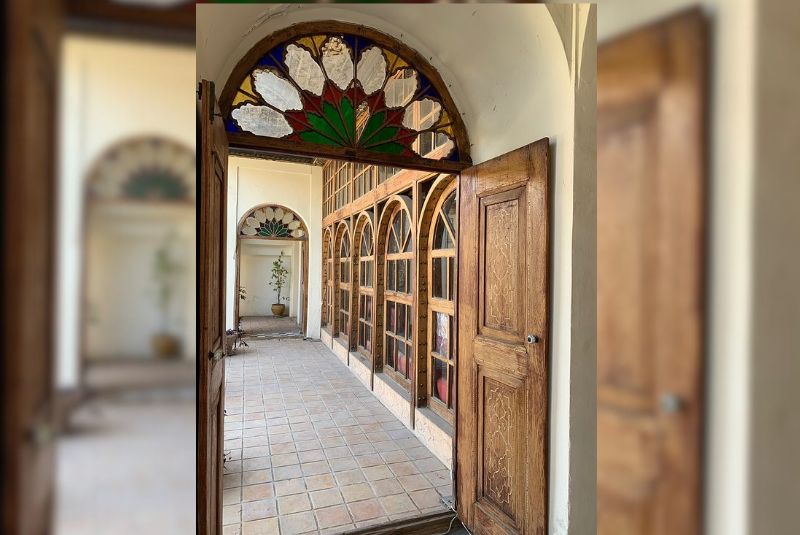
Accessibility
The Manteghi Nezhad house offers a unique experience for all visitors, but accessibility may vary. Older structures like this mansion might have limitations in terms of wheelchair access or easy navigation for elderly visitors. Some areas may include steps, narrow passageways, or uneven flooring, common in historical buildings. However, efforts are often made to ensure that as many visitors as possible can enjoy the site, and guided tours may be available to assist those who need extra help.
Nearby Attractions in Shiraz
After exploring the Manteghi Nezhad Historical Mansion, visitors can explore several other fascinating attractions in Shiraz, each offering a unique cultural and historical experience. Below are a few must-see sites located near the mansion:
Nasir al-Mulk Mosque (Pink Mosque)
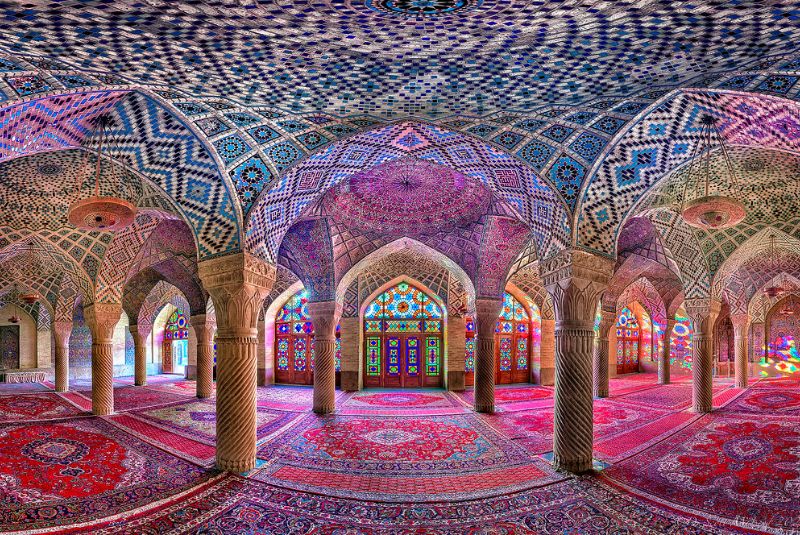
Known for its stunning stained glass windows, the Nasir al-Mulk Mosque is a renowned site in Shiraz. The vibrant interior, with colorful tiles and intricate patterns, transforms into a kaleidoscope of light during the morning hours. It is one of the most photographed landmarks in the city, attracting visitors eager to witness its radiant beauty firsthand.
Vakil Bazaar
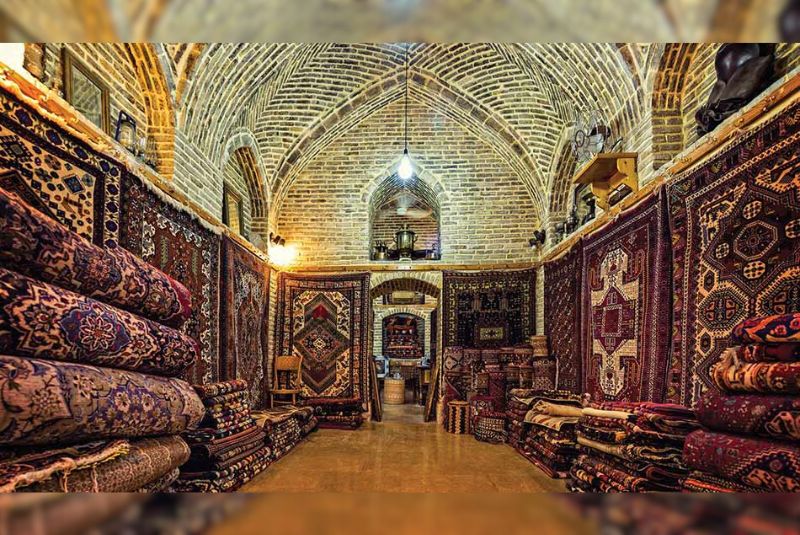
The Vakil Bazaar is one of the oldest and most significant traditional markets in Shiraz. Visitors can wander through its many aisles, where they will find handicrafts, spices, carpets, and souvenirs that capture the essence of Persian culture. The bazaar is not only a place for shopping but also a center for experiencing the vibrant atmosphere of Shiraz.
Vakil Bathhouse
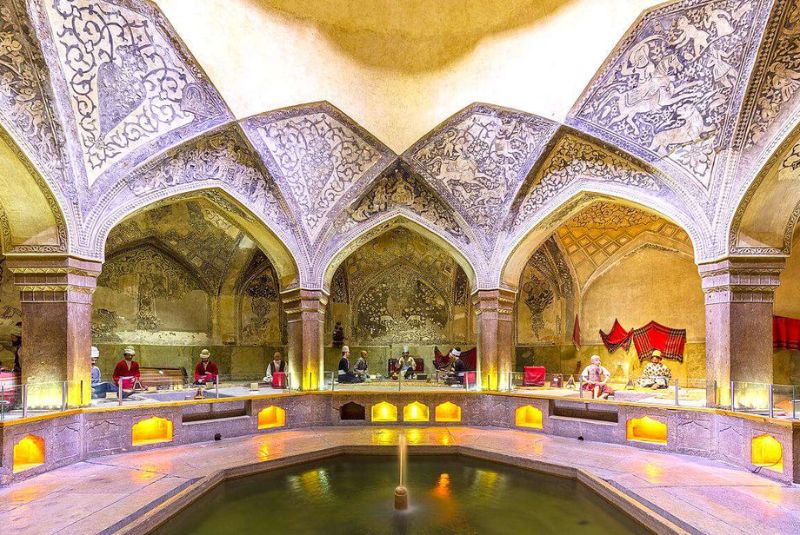
Located near the Vakil Bazaar, the Vakil Bathhouse is a well-preserved example of a traditional Persian hammam. This historic bathhouse showcases the architectural ingenuity of the past with its domed ceilings, arches, and intricate tile work. It provides insight into the ancient practices of public bathing and social gatherings that were an integral part of Persian life.
Eram Garden
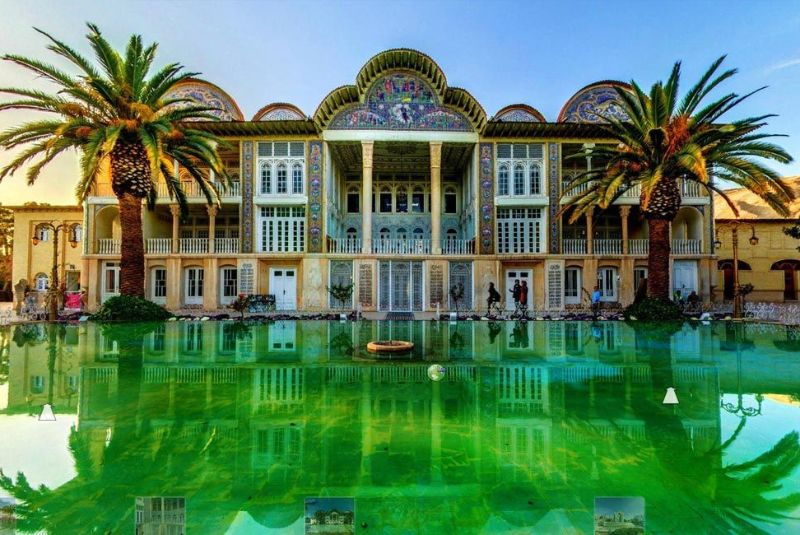
Eram Garden, a UNESCO World Heritage site, is a stunning example of a traditional Persian garden. Its lush greenery, water features, and meticulously organized layout offer a peaceful retreat from the bustling city. The garden also includes a historical mansion, adding to its cultural significance. A visit to Eram Garden allows tourists to experience the tranquility that Persian gardens are known for.
Tomb of Hafez
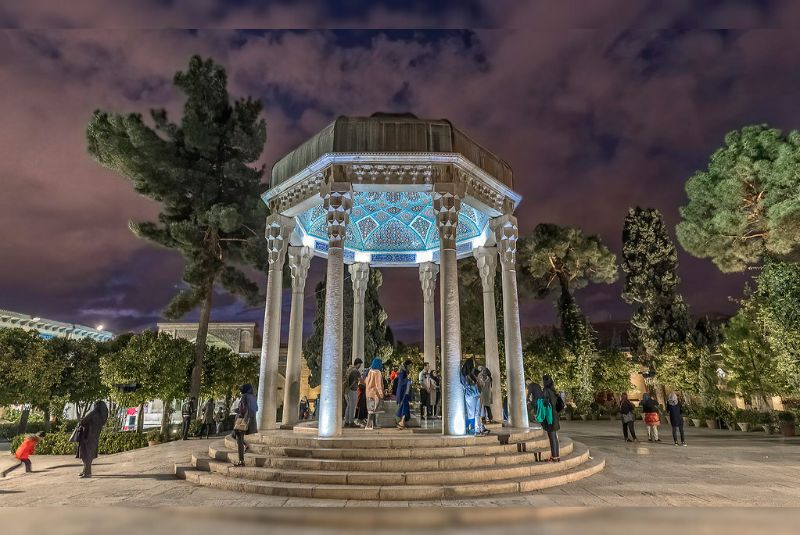
The Tomb of Hafez is a beautiful mausoleum dedicated to one of Iran’s most celebrated poets. Hafez’s poetry holds a special place in Iranian culture, and his tomb has become a place of pilgrimage for those who admire his works. Surrounded by gardens, the site offers a serene atmosphere where visitors can reflect on the poet’s influence and his contributions to Persian literature.
Shah Cheragh

Shah Cheragh is one of the most significant religious sites in Shiraz, known for its dazzling mirror work and spiritual importance. The site is a major pilgrimage destination for Shi’a Muslims and features a grand courtyard and intricate architectural details. Visitors are often struck by the magnificent display of light reflecting off the mirrored surfaces inside the shrine, making it an awe-inspiring place to visit.
Best Time to Visit Shiraz
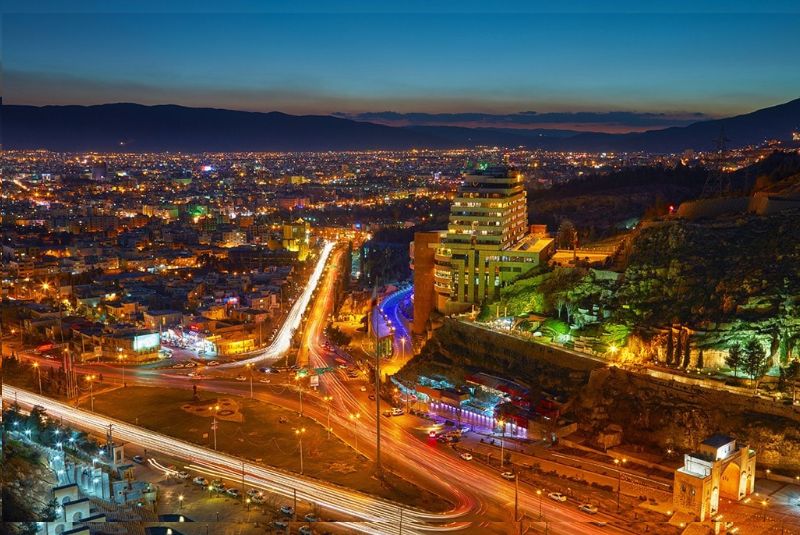
The best time to visit Shiraz is during the spring (March to May) or fall (September to November) when the weather is mild and pleasant. Spring, in particular, is ideal because the city comes alive with blooming flowers, especially in its famous gardens. Avoid visiting during the peak summer months (June to August), as temperatures can become extremely high.
Practical Tips
- Local Customs: Iran follows conservative cultural norms, so it's important to dress modestly. For women, headscarves and long-sleeved clothing are mandatory in public places. Men should also dress modestly, avoiding shorts.
- Language: While Persian (Farsi) is the official language, many people in tourist areas speak some English. Learning a few basic Persian phrases can be helpful.
- Currency: Iran uses the Rial (IRR), and credit cards are not widely accepted due to international sanctions. It’s best to carry cash, and exchange money at authorized exchange centers.
- Etiquette: Be respectful when visiting religious sites like Shah Cheragh, and follow local customs regarding behavior and dress.
Final Takeaway
For those planning to explore Shiraz, the Manteghi Nezhad Historical Mansion is an essential stop on their itinerary. After exploring the mansion, don’t miss the chance to visit the nearby attractions, each offering a unique perspective on the city’s history and cultural richness.
Share your story!
Comment below and let us know about your Experience.
Your story inspires others!


Comment
Leave a Comment